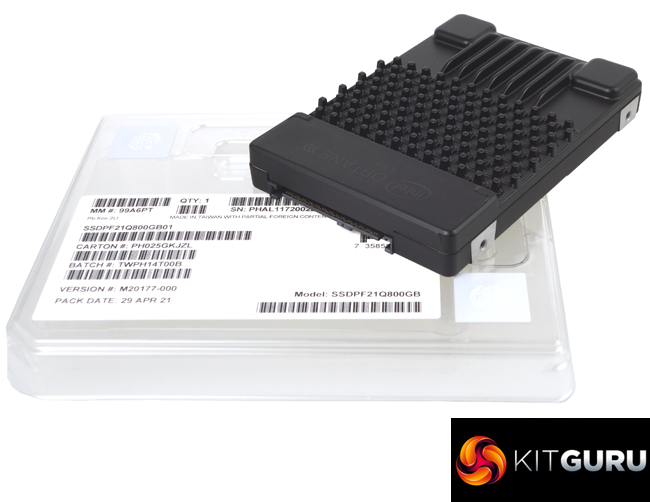Originally designed as a very fast drive for the data centre market, hence the DC part of the name, Intel has now released the Optane DC P5800X to the outside world, although you need very deep pockets to own one.
The Optane DC P5800X comes in three capacities; 400GB, 800GB and 1.6TB. The drive uses an Intel PCIe 4.0 x4 NVMe Optane 8-channel controller which looks after Intel 2nd generation Optane memory and uses a U.2 interface.

Intel quotes Sequential performance figures for the drive of up to 7,200 MB/s for reads and up to 6,100 MB/s for writes. We could confirm the official read figure with a best test result of 7,383MB/s, however, the best write score we got was 5,269MB/s some way short of the official figure.
Random performance is quoted as up to 1,500,000 IOPS for reads and up to 1,350,000 IOPS for writes. Using our 4-threaded test we couldn't get close to these figures with a best read result of 368,804 IOPS and 312,670 IOPS for writes. However, Intel’s 3D XPoint memory technology has been designed to offer very quick performance at low queue depths and at low latencies, to this end the QD1 test figure of 205,373 IOPS for reads and 184,698 IOPS for writes are very impressive.
It's a bit of a power-hungry beast with Intel quoting an active power rating for the 800GB DC P5800X of 18W, and 4.2W when idling. The endurance ratings for the drive are staggering however. The 800GB P5800X is rated at up to 100 DWPD – that's a 100 drive writes per day for the length of the 5-year warranty which, in case you were wondering, works out to be around 146 petabytes of data…
We found the 800GB Intel Optane DC P5800X on LambdaTek for £1,923.20 (inc VAT) HERE.
Discuss on our Facebook page HERE.
Pros
- Overall performance.
- Low queue depth performance.
- Extraordinary endurance.
Cons
- Eye-watering pricing.
- Couldn't get close to the maximum random figures during testing.
KitGuru says: Designed for use in data centres, Intel’s Optane DC P5800X may not have the Sequential performance advantage over the lastest consumer Gen4 drives but what it does offer, thanks to the 3D XPoint memory technology, is unmatched high throughputs at low latencies and queue depths, as well as unbelievable endurance. But – and it's a very, very big but – you will certainly have to pay for all that low queue depth performance.
 KitGuru KitGuru.net – Tech News | Hardware News | Hardware Reviews | IOS | Mobile | Gaming | Graphics Cards
KitGuru KitGuru.net – Tech News | Hardware News | Hardware Reviews | IOS | Mobile | Gaming | Graphics Cards



